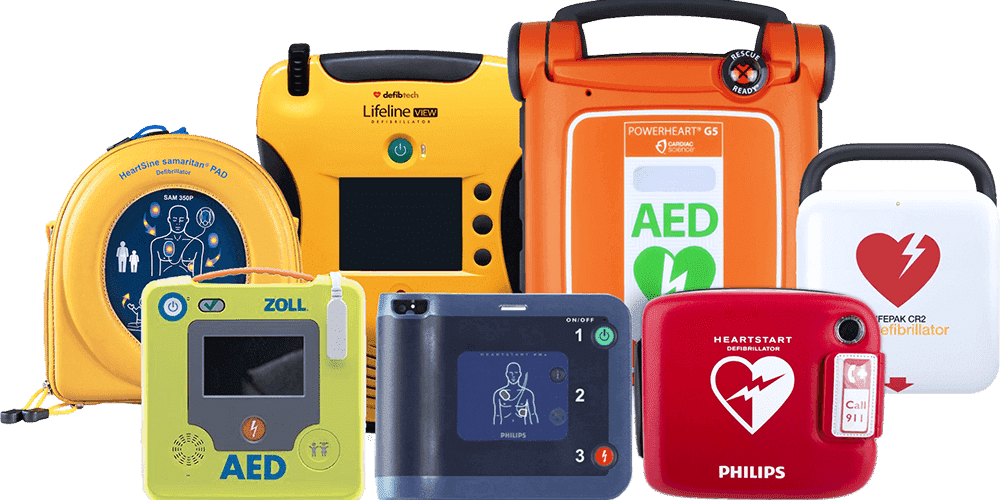No products in the cart.
AED's
The Importance of Timely AED Battery Replacement
Automated External Defibrillators (AEDs) are critical devices used in emergencies to restore a normal heart rhythm in individuals experiencing sudden cardiac arrest (SCA). While the presence of an AED can significantly increase survival chances, its effectiveness hinges on proper maintenance, particularly the timely replacement of its battery. This article explores the importance of timely AED battery replacement, examining the implications for emergency preparedness, device reliability, and overall safety.
ED Battery Functionality

The battery in an AED is essential for powering the device and ensuring it operates effectively when needed. Most AEDs utilize long-lasting lithium batteries designed to support multiple uses and have a shelf life ranging from 3 to 5 years. Over time, however, even the best batteries can lose their charge or become ineffective. Regular checks of the battery status and timely replacements are crucial to ensure that the AED is ready for use at a moment’s notice.
The Consequences of Delayed Replacement
Neglecting to replace an AED battery on time can have severe consequences. In emergencies, every second counts; if an AED fails to operate due to a dead or depleted battery, the outcome could be fatal. Studies show that survival rates for cardiac arrest victims decrease significantly with each passing minute without defibrillation. Therefore, ensuring the AED is functional and has a fully charged battery can make the difference between life and death.
Legal and Regulatory Considerations
In many jurisdictions, there are legal requirements for maintaining AEDs, including ensuring that they are in working condition. Failure to comply with these regulations can lead to legal liabilities, especially if an AED is needed in an emergency and found to be non-functional due to a dead battery. Organizations that invest in AEDs must prioritize regular maintenance and battery replacement as part of their legal and ethical responsibilities to protect the health and safety of employees, customers, and the public.
Maintenance Protocols for AEDs

Implementing a routine maintenance protocol for AEDs can help ensure that batteries and other essential components are in working order. This includes:
Regular Inspections:
Schedule regular checks to assess the battery status, electrode pads, and overall condition of the AED. Monthly inspections can help identify potential issues before they become critical.
Documenting Maintenance:
Keep a log of all maintenance activities, including battery replacement dates and inspections. This documentation can be useful for compliance with regulations and for internal record-keeping.
Establishing Alerts:
Some AEDs come equipped with maintenance alerts that notify users when the battery is nearing its expiration date. If your device lacks this feature, consider setting calendar reminders to prompt timely checks.
Training Staff:
Ensure that employees or designated individuals are trained in the operation and maintenance of the AED. Knowledgeable staff can quickly assess the device’s status and take action when necessary.
Choosing the Right Replacement Battery
When it’s time to replace the battery, selecting the right type is crucial. Always refer to the manufacturer’s specifications to ensure compatibility with your AED model. Using non-compatible or substandard batteries can lead to malfunctions, putting lives at risk. Genuine replacement parts not only ensure reliability but may also be necessary to maintain the device’s warranty.
The Role of Technology in AED Maintenance
Advancements in technology have introduced solutions to simplify AED maintenance, including smart AEDs that monitor their own status. These devices can automatically alert users when maintenance is needed or when battery replacement is due. For organizations with multiple AEDs, utilizing such technology can streamline maintenance processes and enhance compliance with regulations.
The Cost of Neglect
While it may be easy to overlook the costs associated with regular battery replacements, the potential expenses related to a malfunctioning AED can be far greater. In the event of a cardiac arrest, the financial and emotional toll of not having a functional AED can be devastating. Investing in timely battery replacements is a small price to pay for the peace of mind that comes with knowing you are prepared for emergencies.
Building a Culture of Preparedness
Creating a culture of preparedness within an organization involves more than just having an AED on-site. It requires a commitment to regular maintenance, training, and awareness. When employees understand the importance of AED functionality, they are more likely to participate in regular checks and take the necessary steps to ensure the device is ready for use. This proactive approach can foster a safer environment and encourage a sense of responsibility among all staff members.
Conclusion
The timely replacement of AED batteries is a critical component of emergency preparedness and response. Understanding the implications of neglecting this essential task highlights the importance of regular maintenance, compliance with legal requirements, and the potential consequences of a malfunctioning device. By prioritizing timely battery replacement and fostering a culture of safety and preparedness, organizations can ensure that their AEDs are ready to save lives when every second counts. Investing in proper maintenance not only protects the health and safety of individuals but also reinforces the commitment to being prepared for emergencies in any environment.






